The world is a big, wonderful place full of facts we never thought possible. For instance, if a pregnant mouse has a sudden medical issue, the fetus will send stem cells to heal the mother, increasing its chances of survival as well. Fetal stem cells have been found in human mothers as well, dubbed by science as microchimerism.
Bright Side dug up some more marvelous facts about nature and its creations, upholding our yearly resolutions to spread knowledge and joy.
1. The heart slows when your face touches water.
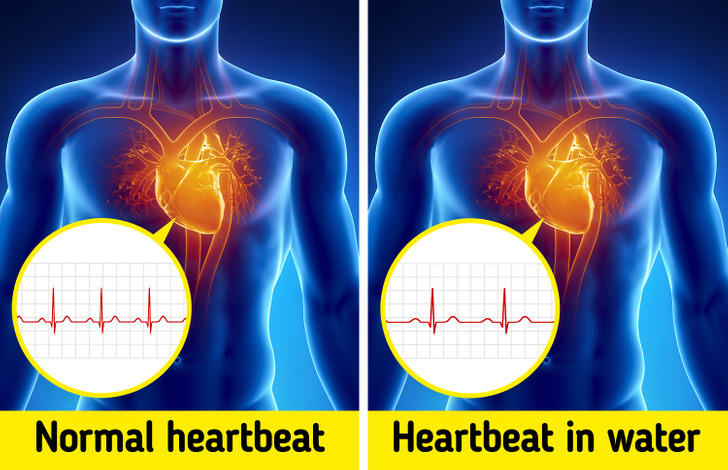
As mammals, we can’t breathe underwater, so as part of the mammalian dive reflex, our heart rate goes down in the water — more so if we go underwater. Even splashing the face with water makes the heart slow down, making it a great way to calm down.
2. Fungus can break down plastic in weeks.
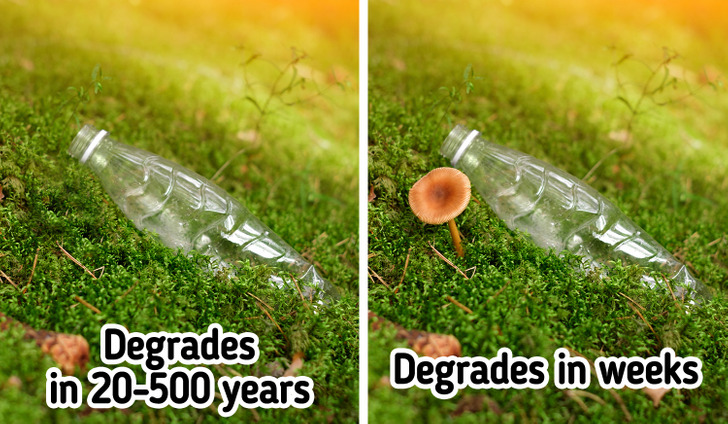
It is said that in the future, there may be more plastic in the ocean than fish. This is why the plastic-eating fungus is great news, and there are around 50 new species of such fungi discovered already. One of the fungi discovered can digest plastic within 2 months, so there’s hope for us yet.
3. Newborn babies can support their own weight.
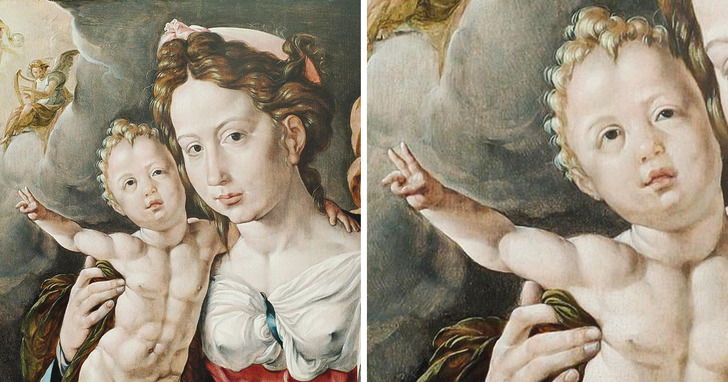
Newborn babies are strong — strong enough to be able to grasp things in their tiny fists and even support their weight as shown by an experiment done in the nineteenth century. Louis Robinson witnessed babies able to hang from a walking stick, from 10 seconds to 2 minutes and 35 seconds.
4. Koala fingerprints have been mistaken for human ones.
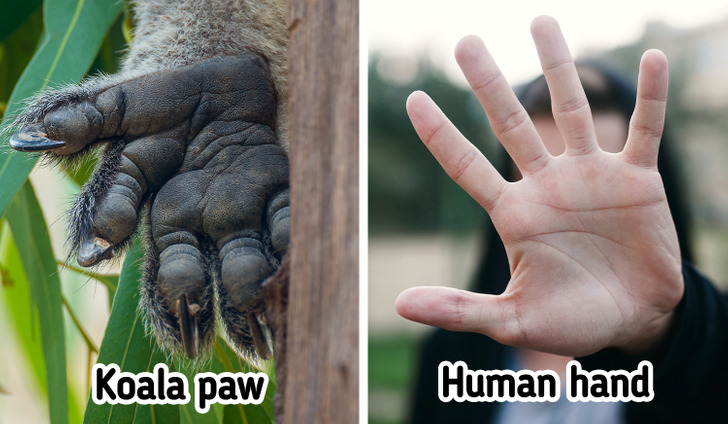
We’ve been told that our fingerprints are unique, and they are. But the fact remains that even though we share a common ancestor with the koala that was alive 100 million years ago, koala fingerprints look very similar to human fingerprints, as do chimpanzee fingerprints for that matter.
5. Snails can sleep for 3 years.
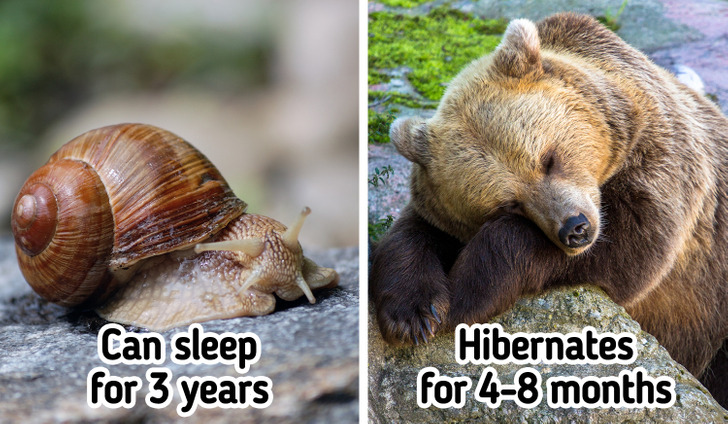
If you thought bears had it good with hibernation, meet the snail. Snails can sleep rather than hibernate for 3 years at a time without needing food. Of course, this is with some snail species, not all of them. Meanwhile, bears usually hibernate for just 4-8 months.
6. Sloths need 2 weeks to digest food.
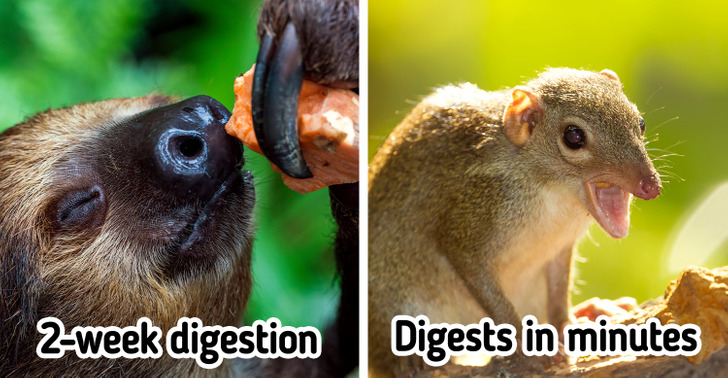
Sloths don’t only move in slow motion — even their insides move slowly, ostensibly to preserve energy, which is why a sloth’s digestive system takes 2 weeks to process the food it ate. Plus, most of what it eats is indigestible, giving it very little energy from each slowly chewed mouthful.
On the other end of the spectrum lies the shrew, whose digestion takes mere minutes and is done so fast, not much of it is fully digested. This is the reason why shrews eat their own feces. They can die of starvation in a matter of hours if they don’t eat.
7. Your brain ignores seeing your nose.
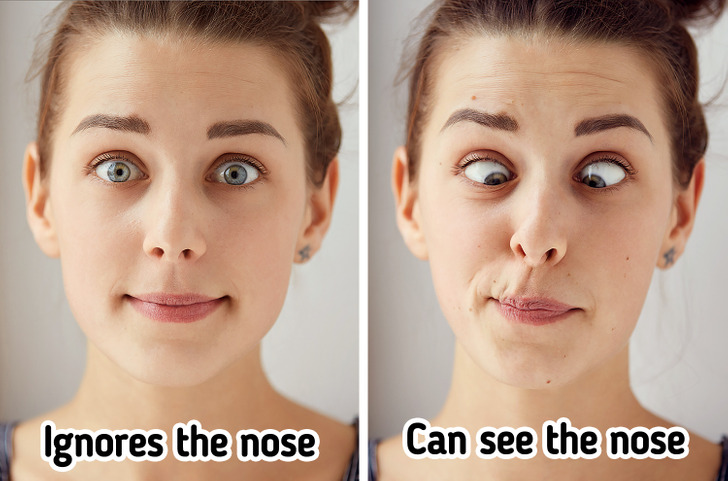
We can see our nose all the time, it’s just that the brain tends to ignore it because it’s a constant visual stimulus. It’s the same with people who wear glasses. After a while, they simply stop noticing them.
8. Your forearm is the same length as your foot.

If you don’t have the time to try on a shoe, measure it from your elbow crease to your wrist. If it fits or is just a little smaller, it would fit your foot because the length of your forearm is the same as your foot. And this is just one of many human body ratios that are a marvel in themselves, including the fact that your femur bone is one-quarter your height.
9. You can “see” your white blood cells.
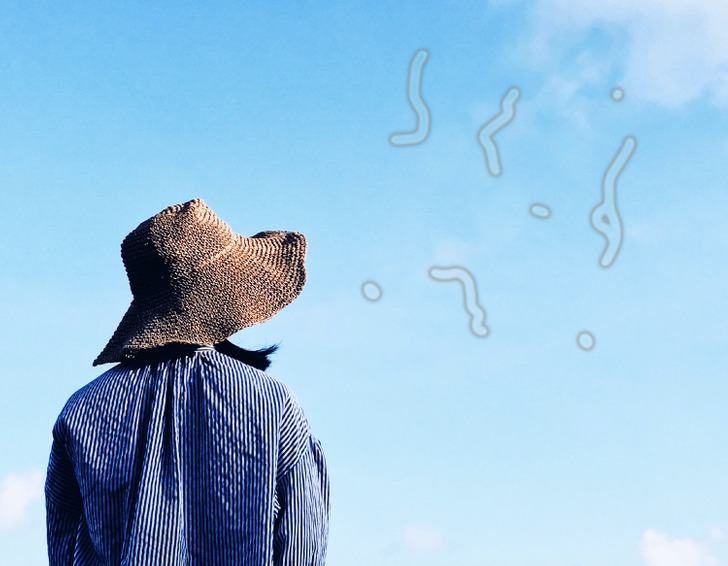
If you look up at a cloudless, bright blue sky and see some wiggly things at the periphery of your vision, you’ve just experienced the blue field entoptic phenomenon. The wiggly things are white blood cells moving in the fine blood vessels moving in front of the retina, at the back of the eye.
10. Human beings have striped skin, but only cats can see it.
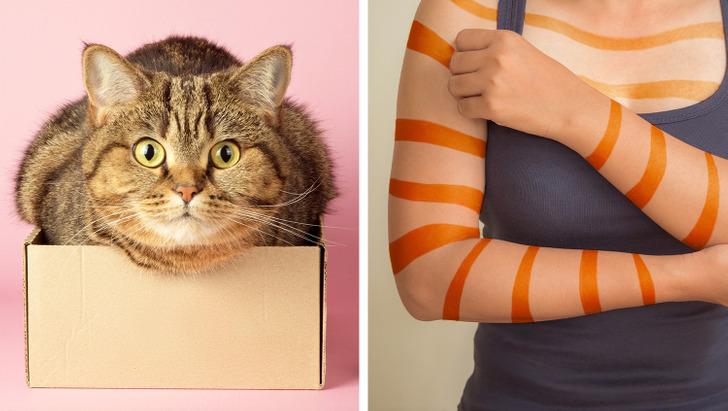
Human beings have stripes and patterns on the skin too, and they are called Lines of Blaschko, name eponymously by the scientist who discovered them, Dr. Alfred Blaschko. These are closer to tiger stripes, forming more of a V-pattern fanning out from the center to the extremities. These lines are visible under UV light, a spectrum that cats can see too, which is why cats can see you as a striped being as well.
Which of these facts turned out to be a revelation for you? Share your extreme nature facts with us and blow us away.
Preview photo credit Shutterstock.com, Shutterstock.com
A courageous puppy cries out for help and battles to save its mother from a giant python’s attack

A brave little pup shows extraordinary courage by raising the alarm to save his mother from the clutches of a giant python in a heartbreaking and breathtaking scene caught on camera.
The harrowing incident occurred in a remote village, illustrating the surprising bond between a pup and his mother, as well as the resilient spirit of animals in the face of danger.
An astonishing story of daring and survival unfolded before the eyes of stunned people in a small, remote community where nature and wildlife intertwined.

This heart-stopping story revealed the steadfast strength and close relationship formed by a small dog and his mother as they faced an imposing threat from a massive python.
The theological encounter occurred in the quiet of the village, where daily life went on according to natural rhythms.
However, the peace was disrupted when a gigantic python coiled itself tightly around the mother dog, threatening her very survival. The mother dog found herself in a dangerous situation, caught in the clutches of the reptilian predator.
But help was not far away. A brave and cunning dog, barely a few months old, became a witness to the dangerous event unfolding before his eyes.
The young canine understood that he had to act quickly and with determination, driven by a natural resolve and an unbreakable relationship with his mother.

The brave pup unleashed a tremendous cry for help, his frantic call echoing throughout the community, with every ounce of power and bravery he possessed. The urgency and anxiety in his voice was unmistakable, prompting local residents to search for the cause of the uproar.
Locals rushed towards the terrified dog, guided by the pup’s heartfelt call, aware that time was of the essence.
As they approached the scene, their eyes widened in amazement and bewilderment at what they saw. The mother dog, wrapped in the python’s tight embrace, struggled feverishly for freedom, her life hanging in the balance.

The people fearlessly worked together to save the mother dog from the clutches of the vicious snake. Armed with tools and their collective strength, they developed a strategy to rescue the mother dog from the python’s grasp.
The villagers carried out their strategy with precision, patiently loosening the python’s coils and eventually releasing their hold on the mother dog in a display of unwavering bravery and timing.
As the tension eased and the python’s grip loosened, hope ignited in the hearts of all who witnessed the rescue effort.

Finally, with one last concentrated attempt, the villagers managed to completely free the mother dog from the python’s suffocating grip. As the brave canine was reunited with her resilient young pup, the crowd erupted in relief and gratitude.

This extraordinary story of bravery and survival serves as a poignant reminder of the tremendous bonds that exist in the animal kingdom, as well as the impressive strength displayed by creatures great and small.

The narrative of the pup’s brave call for help and the villagers’ collaborative attempt to save the mother dog from the clutches of a gigantic python exemplifies the indomitable spirit that dwells in every living being.




Leave a Reply